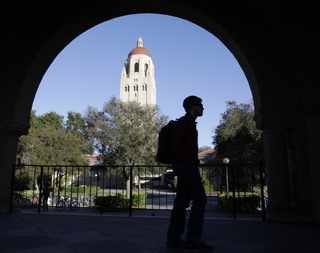As Americans everywhere continue to grapple with the economic effects of COVID-19, federal officials are weighing whether to provide a second round of stimulus checks and extend the suspension of student loan interests and payments for another year.
These short-term solutions are critical for so many newly unemployed Americans. They allow individuals to put what money they do have toward day-to-day essentials – food, shelter, healthcare – and protect the things that matter most in life; the safety, health, and wellness of their loved ones.
But they don’t go far enough. The American workforce is going to be reshaped in important ways by the trends of the past few years, not just the emergency of the last few months, and it’s time for a national strategy to connect workers and opportunities.
The results of the decades-old status quo are clear. At least 45 million Americans have student debt, totaling $1.6 trillion. An estimated 10 million of these individuals are now out of work.
And these burdens don’t fall equally: 66% of white students take out loans to attend college, compared to 90% of Black students and 72% of Latinx students. Twenty years after starting college, the average white borrower has paid down 95% of their loans, while the average Black borrower still owes 95%. This kind of economic burden limits social mobility, widens the earnings gap, and has detrimental effects on the ability to pay debts, save money, and care for a family. Along with underemployment, this can also lead to systemic issues that are difficult to reverse.
According to the Bureau of Labor Statistics, in June 2020, 18% of Americans were underemployed, desiring a full-time position but working 35 hours or less per week. This tops the peak rate of 17.1% seen during the Great Recession, making underemployment yet another issue we must immediately solve.
To address these debt and employment issues, we need to understand that “college for everyone” isn’t a plan. We need to think of career education as a continuum, and apply reforms at the K-12 level. By starting earlier to prepare our kids for the job demands of our nation’s economy, we will – help them at least begin to explore and prepare for those career paths as early as middle school. Take, for instance, the multitude of students now so inspired by our nation’s healthcare workers. They’re eager and excited to pursue similar paths, and it’s our responsibility to give them that option.
As we think about this multifaceted issue, we must also consider options that help adults quickly and affordably respond to changing workforce demands. Bootcamp-style skills training holds promise here, costing less than traditional two- or four- year degrees – some even have income-share agreements that reduce an individual’s up-front investment – and typically taking up only two to three months of their time. The tech industry has seen success with this model, and others with a shortage of skilled workers – manufacturing and healthcare are just two – are well-positioned to see the same.
COVID-19 is having a negative impact on just about every industry. However, should something so unforeseen happen again, if we have a world in which students start working toward their career sooner, and provide options for adults to rapidly adapt to changing economic realities and demands, we will be in a better position than where the only option is to pray for delayed payments and debt forgiveness.
Stimulus checks and deferred student loans might be our best bet for the time being, but now is also the time for us to start working toward a better, more career-ready future.
Read Full Article »




